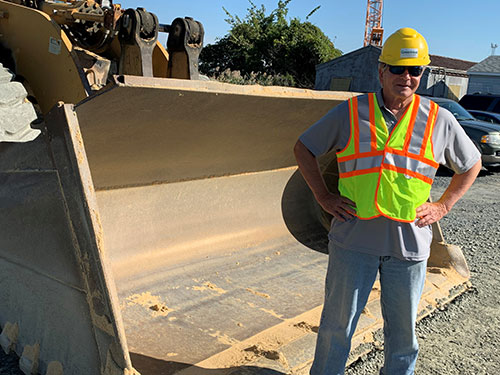Whether you are a homeowner, farmer, business, religious organization, or community association, GreenVest understands the value of your property. The ability to protect, safeguard, and restore resources such as streams and rivers is dependent on each landowner’s willing participation. GreenVest’s goals are clear. We work to establish resiliency to help address climate change and rising seas. We restore and stabilize streams and shorelines, planting forests and wetlands with native species that feed and filter the water and nourish wildlife. We develop or improve storm water management facilities to control harmful runoff. Ultimately, it is about having the cleanest, clearest waters to support aquatic life and people alike.
Your participation is pivotal, and we invite you to work with us to accomplish these goals within your watershed, environment, community, or backyard. Please review our Frequently Asked Questions below and contact us if you would like to know more.
 Paul, GreenVest’s Senior Land Acquisition Specialist, on a potential project site.
Paul, GreenVest’s Senior Land Acquisition Specialist, on a potential project site.
GreenVest restores, enhances, stabilizes, and conserves forests, streams, wetlands, shorelines, and more. We use a nature-based approach and cutting-edge science to rehabilitate the land and deliver regulatory compliance solutions. Depending on the studies and findings of our ecologists and engineers, we construct and reconstruct, returning the land to an effective, nature-based function within its ecosystem. In doing this, GreenVest approaches projects in the least disruptive manner and takes great care, in consultation with you, to blend land with the floodplain in a functional and aesthetic manner.
Participation is entirely voluntary and is carefully designed to benefit both the landowner and the natural environment. In every case, the improvements made to the property increase its functional stability and aesthetic value. A newly restored ecosystem not only benefits the environment, but serves as an aesthetic landscape with native flora, fauna, and wildlife. Without landowners’ participation however, the prospect of clean water and reduced nitrogen, phosphorus, and sediment entering our waterways is lost. Importantly, all planning, design, and work is done at no cost to the owner and most programs provide fair market compensation for the use of the project area. There also is the potential for reduced real estate taxes associated with the restoration work we perform.
A project happens in phases, beginning with sitting down with you to explain the preliminary concepts for mitigation on your property. Our experienced land acquisition team wants to listen to and understand your needs, wants, and concerns. Once an agreement is reached, the project can be broadly defined as Phase 1 - Design & Permitting, Phase II - Construction, and Phase III - Maintenance & Monitoring. Each project timeline varies, but one can generally expect 1 year for design & permitting and a second year for construction, followed by an average of 5 – 7 years of maintenance & monitoring by GreenVest ecologists. Once a conservation easement is granted the landowner is not responsible for any of the maintenance of the mitigated site. Most often, annual inspections are made, and the landowner is provided with notice well ahead of time.
A conservation easement is an agreement between the landowner and the public body that is funding or regulating the restoration, guaranteeing that the easement area will be protected and maintained in perpetuity. The conservation easement only covers the project area as agreed upon between the landowner and GreenVest and is purchased and recorded at the time of conveyance. Conservation easements generally allow an owner full passive, recreational use of the easement area—such as walking, fishing, hunting, and birdwatching—but prohibits most development and cultivation in order to preserve the lands’ newly restored and planted natural state. The landowner, however, retains full title to their property. Under some circumstances, if this is the course that the landowner wants to pursue, GreenVest will purchase an entire property outright.
The conservation easement on your property allows passive recreation, so you can do anything that does not disturb the restored environment. The easement area will be maintained by GreenVest or another long-term steward, so you may not disturb the newly restored environment that has been carefully designed and planted with native grasses and/or trees. Of course, you may landscape and care for your property outside of the easement area in whatever manner you please.
The public does not have access to your property but in some situations, regulators may need to inspect the area, and you will be notified well in advance. The easement description includes the designated access to the project area, which is only accessible by GreenVest ecologists with advanced notice.
GreenVest contracts with various private entities or government bodies and agencies that need mitigation as a result of their past, present, or planned specific activities, such as building roads and bridges. Under a “full delivery” contract, GreenVest is responsible for acquiring needed easements and access to mitigation sites, obtaining regulatory permits, constructing the project, and carrying out initial maintenance and monitoring. After certifying this performance at different stages, the public agency is responsible for project payment. Certain projects are built using grant funds and GreenVest often teams with non-profit organizations in these efforts.
As a landowner, you are not responsible for any project costs or funding. Indeed, in most cases, the landowner receives fair value compensation for the use of their land.
GreenVest looks for a few different things when considering property for a project. Some of these aspects include: